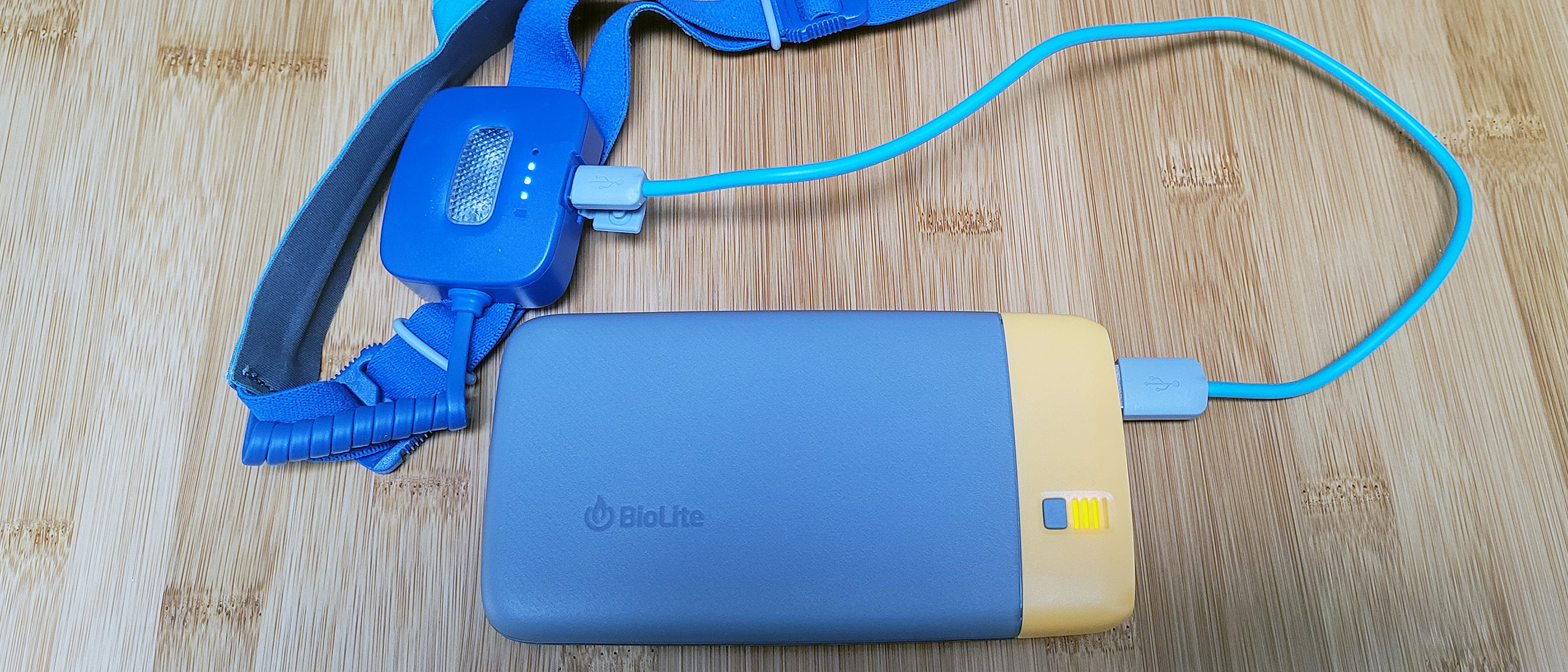Space Verdict
The Charge PD power banks from BioLite are rugged, durable and reliable. An excellent size-to-capacity ratio makes them perfect for short, off-grid outdoor adventures, and you're doing a little bit of good by purchasing one.
Pros
- +
Basic but rugged design
- +
Help with BioLite's clean energy mission
- +
18W PD port for charging laptops via USB-C
Cons
- -
Only one function
- -
No percentage charge indicator
- -
No water protection
Why you can trust Space.com
The BioLite Charge 40 PD power bank pairs perfectly with the recently reviewed BioLite HeadLamp 425 (which scored five out of five as one of the best headlamps for astronomy and low light scenes, so when compiling a guide of the best power banks for astronomers and sky watchers, BioLite might be expected to perform well in this area as well.
Capacity: 6,000 /10,000 / 20,000mAh
Output ports: 2 x USB-A, 1 x 18W PD port
Charging time: 2/2.5/5 hours
IP rating: None
Weight: 125/265/465g
Dimensions: 5.0 x 3.0 x 0.6 / 5.9 x 3.2 x 0.7 / 6.7 x 3.2 x 1.0- inches
The BioLite Charge PD power banks are the ultimate in portable power. With a sleek and stylish design, they offer up to 20,000mAh of power to keep your devices charged up and ready to go. The Charge PD features two USB-A ports and one USB-C port with Power Delivery technology (hence PD in the name), allowing you to quickly charge everything you need for your night of sky-watching. It also has a built-in LCD display to show you how much charge is remaining, so you always know when it's time to recharge (though we should note there's no percentage indicator).
With its lightweight and slim design, the Charge PD appears an excellent option to slip into your kit bag. Here we've given it a hands-on review to see if this will suit your needs or whether one of the other best power banks might be more appropriate.
BioLite Charge PD review
BioLite Charge PD power bank: Design
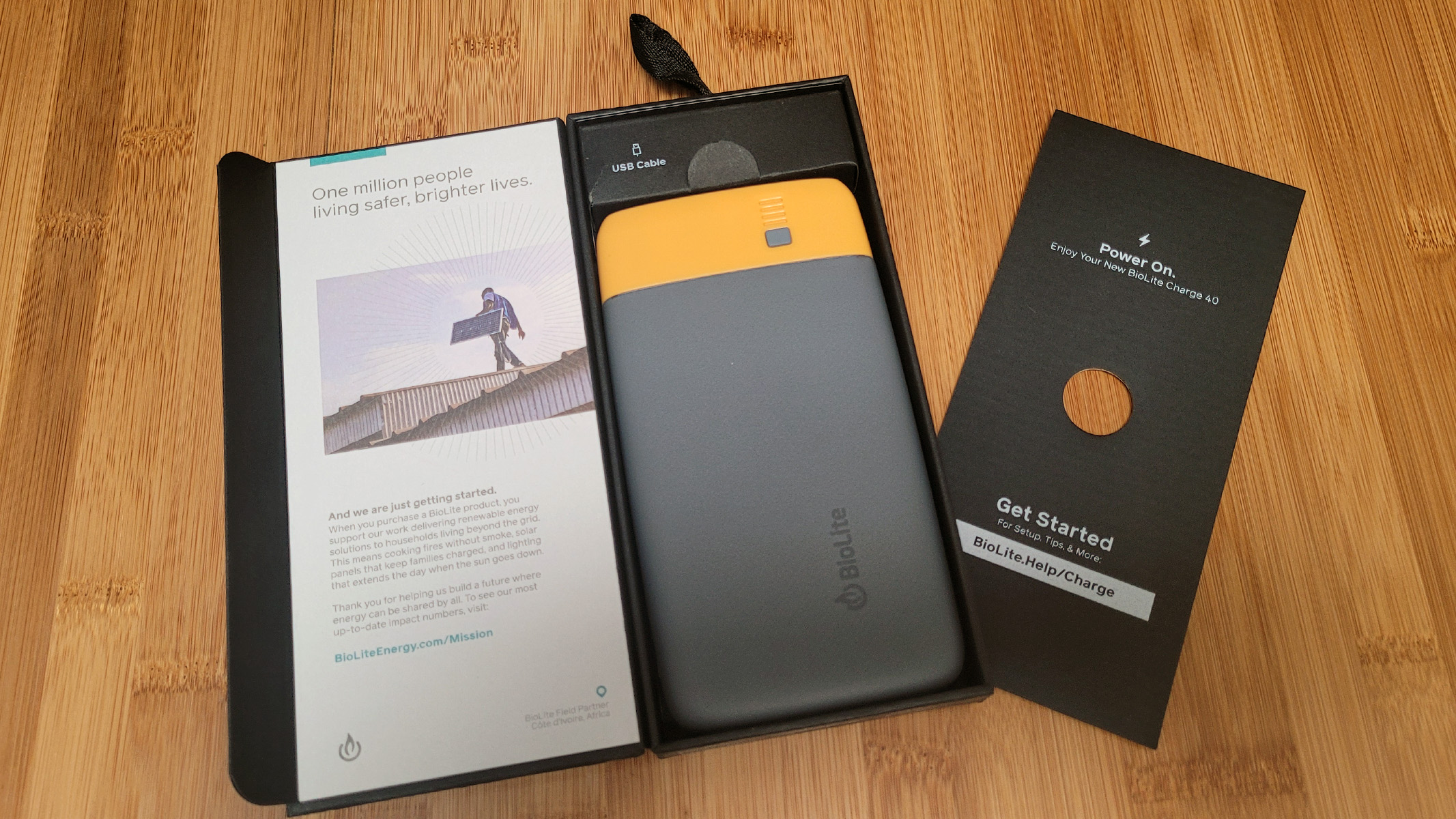
If you're already familiar with the BioLite brand, you'll see that the look and feel of the Charge PD power banks fit their aesthetic perfectly. BioLite are never shy to experiment with color, and the gray rubber body with a hard yellow casing around the ports is no different.
The gray rubber is slightly textured, making it easy to grip and enabling you to put it on the dash in your car without it sliding around. The BioLite logo is discretely etched onto the body on the front, and the back neatly displays the quality assurance marks and device specifications.
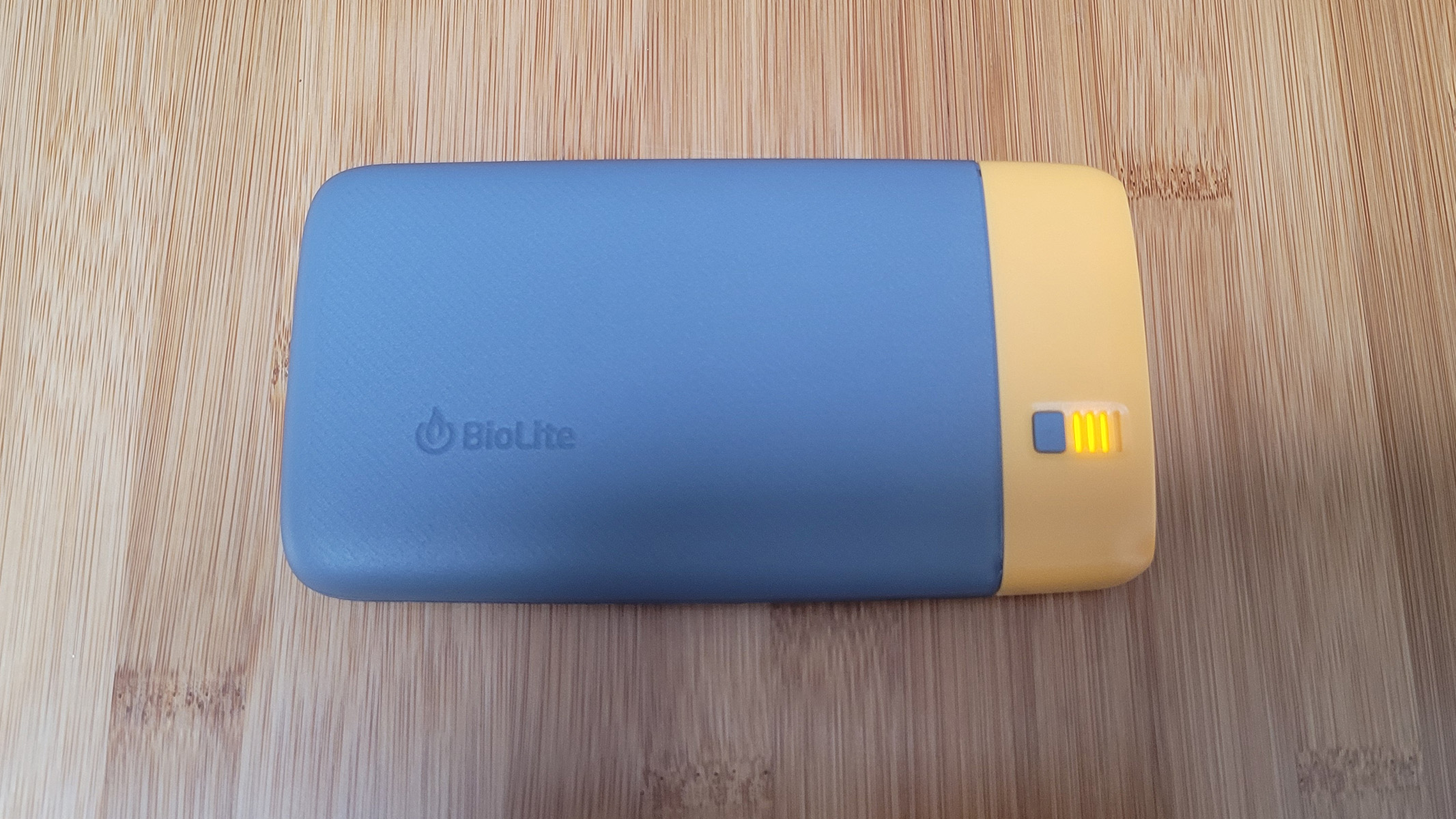
1 x USB-A to USB-C cable
There is an LED battery indicator on the top yellow section of the device. When it is charging or used as a power bank, the indicator lights stay on. If the power bank is not in use, the LEDs need to be operated using the little button next to them. There isn't a percentage indicator, but the four LEDs represent 25% each, where one LED means it has 25% charge left, and four LEDs represent 100% charge.
The corners of the device are nicely rounded and all-in-all this feels like a solid device with excellent build quality.
BioLite Charge PD power bank: Performance
- 18W PD charging
- Fast charging
- Good size to capacity ratio
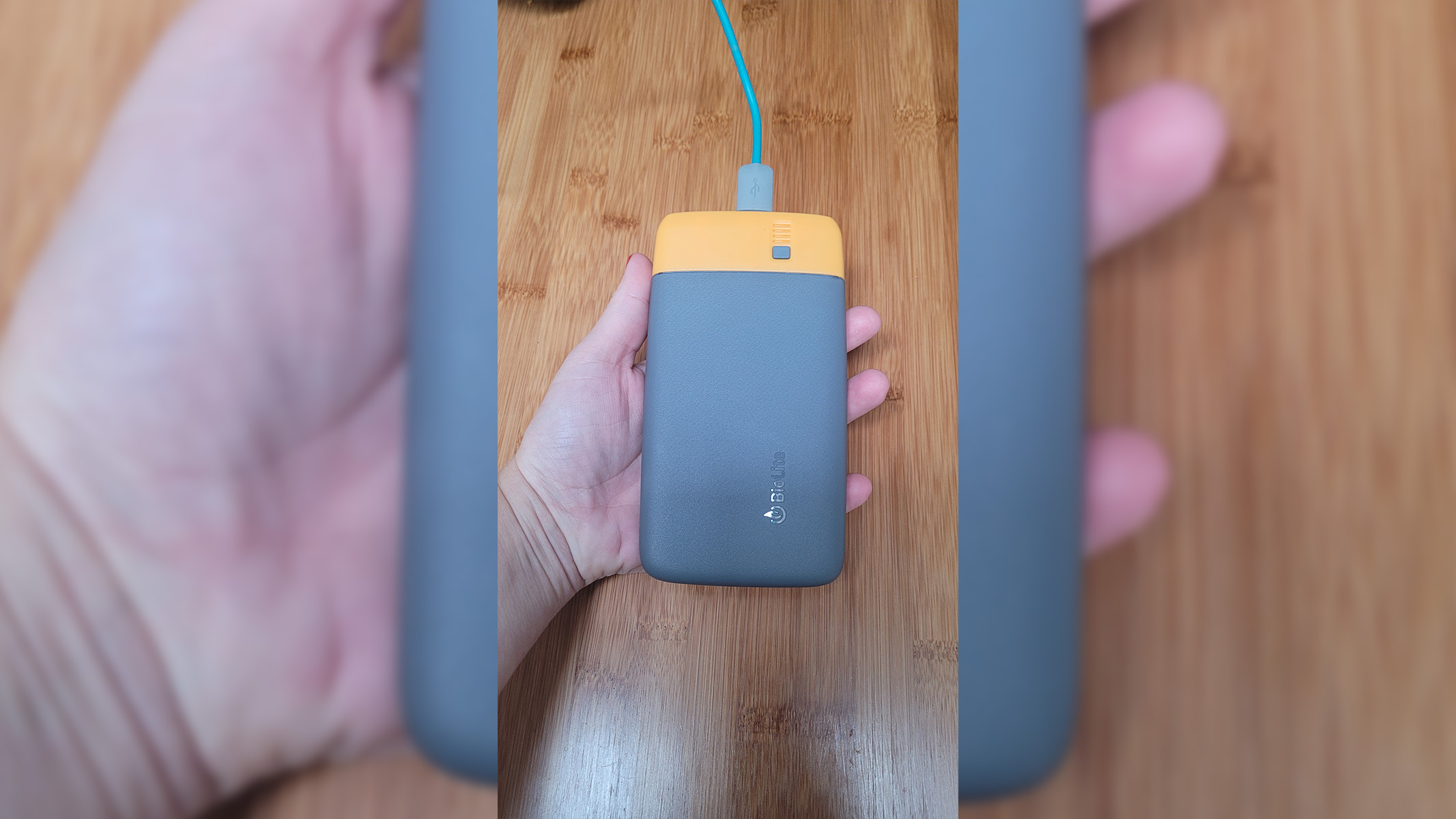
Power Delivery (which is where the power bank drives its 'PD' initials) is a specification to handle higher power. It can charge devices up to 18W and can charge devices up to three times faster than a standard 5W charger. It allows bigger or more powerful devices to charge using a USB connection quickly.
We tested this with our 15.6-inch Samsung Book. With a fully charged BioLite Charge 40 PD, we plugged it into the flat laptop at 12:15 pm and used it as normal. In two hours, after pretty heavy use (trip planning with hundreds of tabs open, photo editing and writing this review), the laptop was charged to 35% before the power bank was fully drained.
When considering which portable battery pack to purchase, the size of the battery, therefore the capacity of the battery to keep your devices charged is one of the most important.
The Charge 80 PD has a 20, 000 mAh lithium-ion power cell (enough for approximately five smartphone charges), and our sample Charge 40 PD gives 10,000 mAh. Given that you're allowed up to 26,800 mAh capacity in your hand luggage on a flight, it would have been nice to add just that little bit extra to the Charge 80 PD. The Charge 40 appears to be the ideal size and weight-to-capacity ratio.
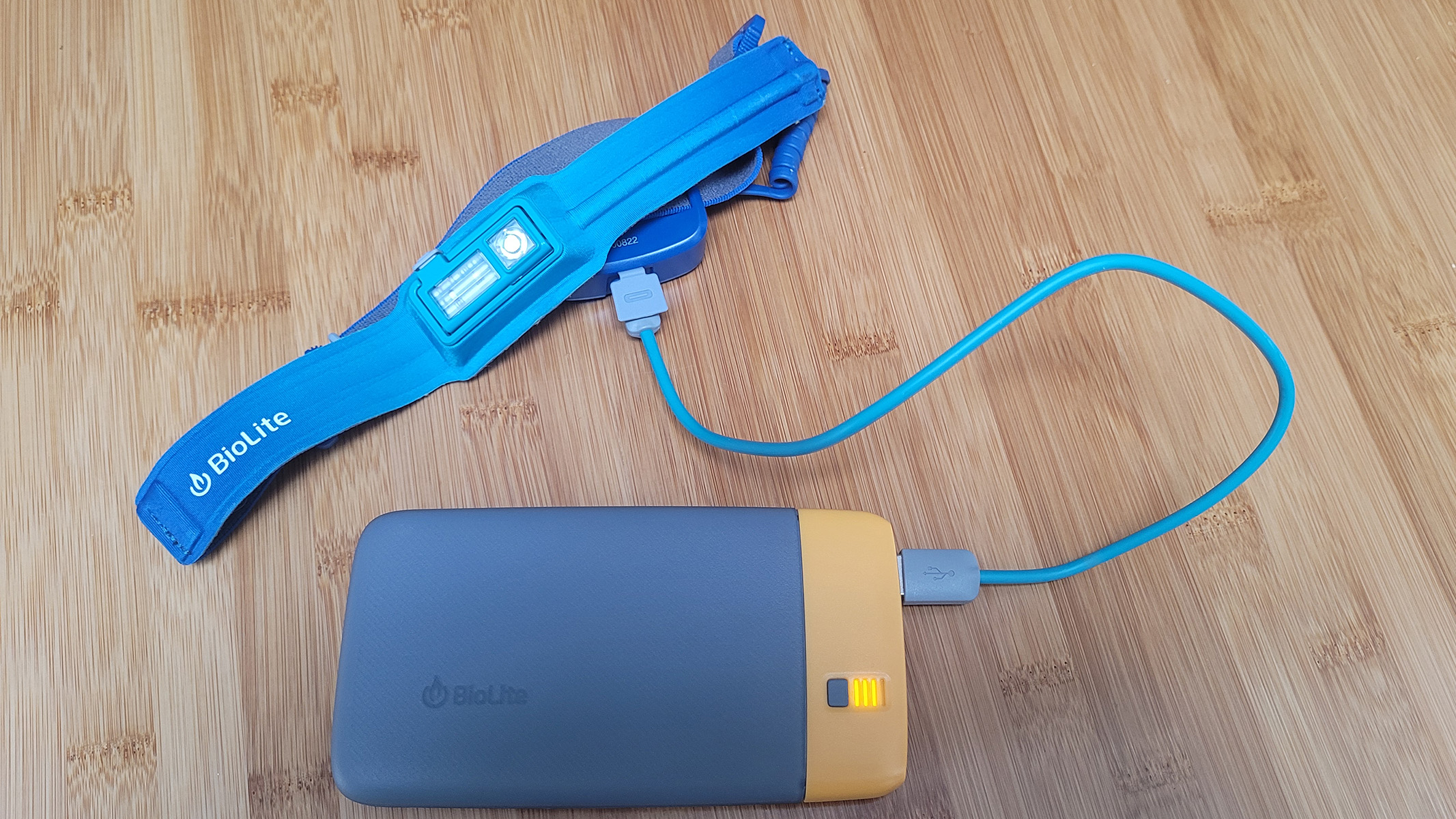
During our tests, the power bank operated as it should, as per the specs. It charges things up quickly (surprisingly so, we thought), and the LED battery indicator seems accurate. The LEDs start to blink when it is about to run out of power entirely. The power bank also offers great device protection thanks to its built-in surge protector and short circuit protection. We could get just over two full charges of our Samsung smartphone from the Charge 40.
One thing we will say about the LEDs is that they glow a yellow-orange color, and unless you're using them in the dark, it's difficult to see if they are lit up or not. That said, they are perfectly visible when in the dark, so you can keep an eye on the power you have at your disposal when you're out sky-watching.
BioLite Charge PD Power Bank : Functionality
- Not waterproof
- Robust body
- We'd prefer 2 x USB-C ports
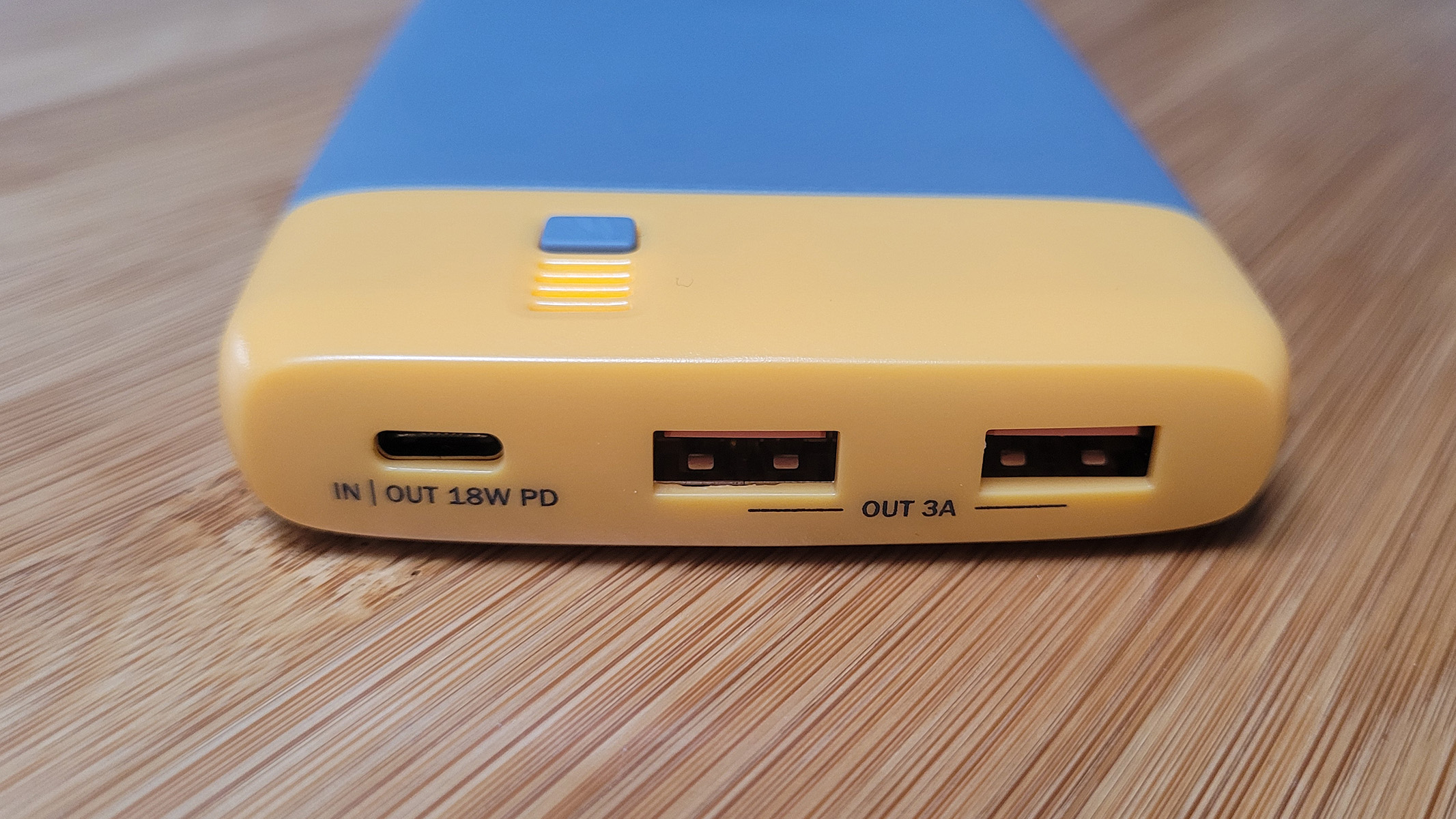
Having recently reviewed the Celestron Elements FireCel Mega 6, we found ourselves missing the ability to clip or hang the power bank onto something while using it, or hanging it up in the cupboard. While many power banks don't have this, we can't help feeling that there is enough space to add a hole in one of the corners to allow us to fit a hanging loop.
While this is a durable and solid device that could withstand knocks and bumps (we put it through a fair few), there is no waterproofing or water resistance of any sort. If you're looking to take your power bank out in rainy weather, you'll want to look elsewhere. Perhaps the aforementioned Celestron Elements FireCel Mega 6. That said, it can operate in very cold (-4ºF/-20ºC) and hot climes (up to 104ºF/40ºC).
When a device is plugged in, the power transfer starts immediately and there are no buttons to press, which is great if you're wearing gloves, or have cold fingers.
While we like the USB-C 18W PD port, another would be nice! With an ever-increasing library of USB-C charged devices, we'd probably opt for 2 USB-C ports instead of 2 USB-A ports if we had the choice.
Should you buy the BioLite Charge PD power bank?
If you're a conscientious shopper, then BioLite is a brand you can purchase from, knowing you're doing a little bit of good. Their revenues are reinvested in building a commercially sustainable business that can bring safe, affordable energy to families living in energy poverty across India and Africa. According to their 2021 impact report, they have reached 3.6 million individuals with clean energy so far, and their mission is to reach 20 million by 2025.
BioLite also has committed to carbon neutrality for the future of the company.
The product itself is a simple, reliable power bank with enough 'juice' to give you peace of mind, knowing there are at least a couple of charges for your devices when away from home.
If the BioLite Charge PD power bank isn't for you
We have rounded up some of the best power banks for astronomers and astrophotographers in our handy buying guide.
There are some smaller capacity, but more functional devices like the Celestron Elements FireCel Mega 6, and we also have huge power stations like the Zendure Super Base Pro 2000 which can keep you charged up off-grid for days.
We'll keep our eye on the market and continue to add power banks that we feel are good value for money, as well as posting genuine deals as and when they arise.
Join our Space Forums to keep talking space on the latest missions, night sky and more! And if you have a news tip, correction or comment, let us know at: community@space.com.

Tantse Walter is a writer, photographer and travel enthusiast that has spent over a decade facilitating global adventurous expeditions. She loves getting into the nitty-gritty of sourcing and planning itineraries, getting out and about in nature, and admiring the night sky.
